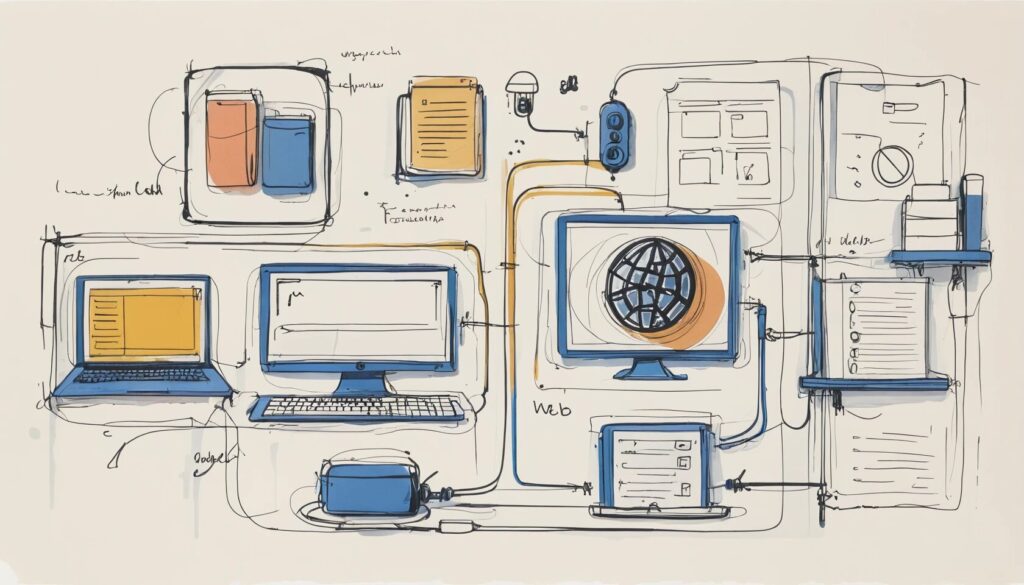Web Applications: The Digital Tools You Can’t Live Without
Imagine a world without web applications. No Netflix binge-watching, no Amazon shopping sprees, no Gmail inbox overflowing with unread emails. Chaos, right? Web applications power our digital lives, making everything from ordering pizza to managing billion-dollar enterprises as simple as a few clicks. But not all web applications are created equal. Some are sleek and dynamic, while others are as rigid as a 90s-era HTML page.
Understanding the different types of web applications is crucial, whether you’re a tech enthusiast, a business owner, or just someone who enjoys the occasional online shopping spree. Let’s dive into the various categories of web applications and why they matter.
1. Static Web Applications
- Basic and minimalistic, with fixed content.
- Built using HTML, CSS, and sometimes JavaScript.
- Editing content requires manual coding.
Think of static web applications as the billboards of the internet—informative but completely unresponsive to user interaction. They’re great for digital resumes, portfolio sites, or any content that doesn’t need frequent updates. However, if you’re looking for dynamic functionality, you might find them as thrilling as a dial-up internet connection.
2. Dynamic Web Applications
- Interactive and database-driven.
- Uses programming languages like PHP, JavaScript, or Python.
- Content updates in real-time without manual intervention.
Unlike their static cousins, dynamic web applications are alive and thriving. They respond to user input, update content in real-time, and generally make the internet a more engaging place. Social media platforms, news websites, and forums fall under this category. If the internet were a party, dynamic web apps would be the life of it.
3. E-Commerce Web Applications
- Designed for online shopping and digital transactions.
- Includes features like product catalogs, payment gateways, and customer management.
- Examples: Amazon, eBay, Shopify.
If you’ve ever abandoned a shopping cart full of items you don’t need (but desperately want), you’ve interacted with an e-commerce web application. These platforms are designed for buying and selling, complete with payment gateways, shopping carts, and customer management tools. Whether you’re running a small online boutique or a global marketplace, an e-commerce web application is essential.
4. Single-Page Applications (SPA)
- Loads a single web page and updates dynamically.
- Faster and smoother user experience.
- Examples: Netflix, Twitter, Gmail.
Single-Page Applications (SPAs) are the cool kids of the web application world. Instead of reloading the entire page every time you click something, SPAs dynamically update content, making everything seamless and fast. They’re fantastic for user experience, but search engines don’t always love them—because who needs SEO when you have a product people already can’t live without?
5. Portal Web Applications
- Centralized access point for specific users.
- Requires authentication and personalized dashboards.
- Examples: Employee portals, university portals, healthcare dashboards.
Picture a portal web application as a VIP club. Only registered users can get in, and once inside, they have access to customized content. Businesses, universities, and healthcare institutions use portal web apps to provide employees, students, or patients with personalized services.
6. Content Management System (CMS) Web Applications
- Allows non-technical users to create and manage content.
- Popular CMS platforms include WordPress, Joomla, and Drupal.
- Ideal for blogs, news sites, and corporate websites.
Not everyone wants to dive into HTML just to update their website. That’s where Content Management System (CMS) web applications come in. They allow users to create, edit, and manage content without any coding knowledge. Whether you’re running a blog, a company website, or an online magazine, a CMS makes life infinitely easier.
7. Animated Web Applications
- Highly visual and interactive.
- Often built with Flash or modern JavaScript frameworks.
- Not SEO-friendly due to limited text-based content.
If you’ve ever been mesmerized by a beautifully animated website, you’ve encountered an animated web application. These apps prioritize design and interactivity, making them perfect for creative projects and digital storytelling. The downside? Search engines aren’t great at reading animations, so SEO takes a hit.
8. Rich Internet Applications (RIA)
- Brings desktop-like functionality to the web.
- Requires browser plugins or advanced JavaScript frameworks.
- Examples: Adobe Flash applications (now obsolete), modern JavaScript-based apps.
Rich Internet Applications (RIAs) are the bridge between traditional desktop software and web-based tools. They’re powerful, visually rich, and can even function offline. The catch? They often rely on plugins, and we all know how annoying it is when a plugin decides to stop working.
The Right Web Application for Your Needs
Choosing the right type of web application is like picking the perfect tool for a job. If you’re running a blog, a CMS is your best friend. If you want to build the next big online marketplace, an e-commerce web application is the way to go. And if you’re looking for speed and interactivity, a single-page application might be your golden ticket.
The web application landscape is vast, and every type has its strengths and weaknesses. What matters most is understanding your business needs and selecting the right technology to bring your vision to life. So the next time you order food online, stream a movie, or check your email, take a moment to appreciate the complex world of web applications working behind the scenes.
